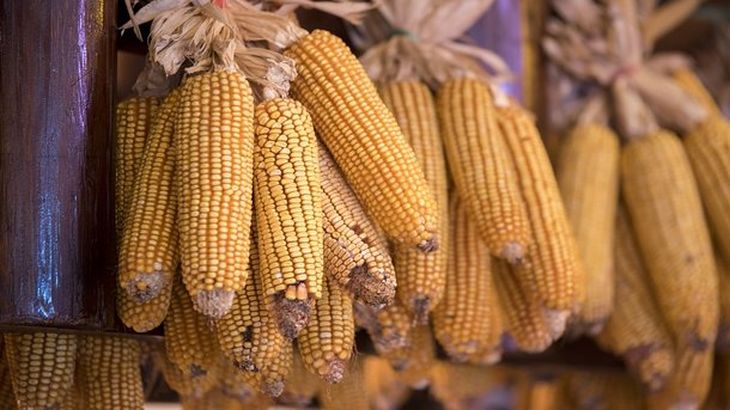2021/22 Brazil Corn Estimate Lowered 5.0 mt to 107.0 Million Tons

The safrinha corn in central Brazil continues to be negatively impacted by the early onset of the annual dry season. The state of Mato Grosso ended the month of April with an average of 30 mm of precipitation (1.2 inches) and the neighboring state of Goias ended April with 12.5 mm of precipitation (0.5 inches). Dryness also extends into the Federal District, western Minas Gerais, northern Mato Grosso do Sul, and northern Sao Paulo.
Some of these areas have not received a significant rain for 30-40-50 days and there is very little rain in the forecast until maybe May 7th. Between May 7th to May 15th, the forecast is calling for limited showers in some of the more eastern areas of Brazil. In the meantime, temperatures will be in the low 90’s °F accompanied by low relative humidity. The Brazilian National Weather Service (Inmet) has indicated that the annual dry season has already started in central Brazil and once the dry season is established in central Brazil, it is very difficult to receive any more significant rains until sometime in September.
Due to the irregular rainfall, the dryness is not equally distributed across these states and I would estimate that 35% to 50% of Brazil’s safrinha corn is in various stages of moisture stress. The corn development ranges from mid-grain fill in the earliest planted corn to pre-pollination in the latest planted corn. The table below is the estimated 2021/22 safrinha corn production from Conab’s April Crop Report.
2021/22 Brazil Safrinha Corn Production
| State | Safrinha Corn Production million tons |
% of Total |
|---|---|---|
| Mato Grosso | 40.11 | 45.3 |
| Parana | 15.49 | 17.4 |
| Mato Grosso do Sul | 10.76 | 12.1 |
| Goias | 10.55 | 11.8 |
| Minas Gerais | 3.21 | 3.6 |
| Federal District | 2.79 | 3.1 |
| Sao Paulo | 2.64 | 2.9 |
Source: Conab April 2022 Crop Report
At this stage, it is very difficult to judge the extent of the losses in each of the dryer states because it will depend on when the corn was planted, the stage of development when the dryness set in, and any future rainfall. In Mato Grosso for example, the best corn is found in central Mato Grosso whereas dryness is a growing concern in the western part of the state as well as in southern and southeastern Mato Grosso.
I lowered the Brazilian corn estimate by 5.0 million tons this week by assuming a 10% loss for the safrinha corn in the states of Mato Grosso, Goias, Minas Gerais, and the Federal District, which combined are projected to produce approximately 56.5 million tons of safrinha corn.
Not all the news is bad for the safrinha corn. The corn in Parana, southern Mato Grosso do Sul, and southern Sao Paulo is generally doing fine except for recent storm damage in western Parana, but the production in these states will probably not be able to make for the losses in central Brazil.
In their April Crop Report, Conab estimated Brazil’s total corn production at 115.60 million tons with the first corn crop estimated at 24.88 million tons (21.5% of the total), the safrinha crop estimated at 88.53 million tons (76.5% of the total), and the third corn crop estimated at 2.18 million tons (1.8% of the total).
Author: Michael Cordonnier/Soybean & Corn Advisor, Inc.
Read also
Wheat in Southern Brazil Impacted by Dry Weather and Frosts
Oilseed Industry. Leaders and Strategies in the Times of a Great Change
Black Sea & Danube Region: Oilseed and Vegoil Markets Within Ongoing Transfor...
Serbia. The drought will cause extremely high losses for farmers this year
2023/24 Safrinha Corn in Brazil 91% Harvested
Write to us
Our manager will contact you soon



